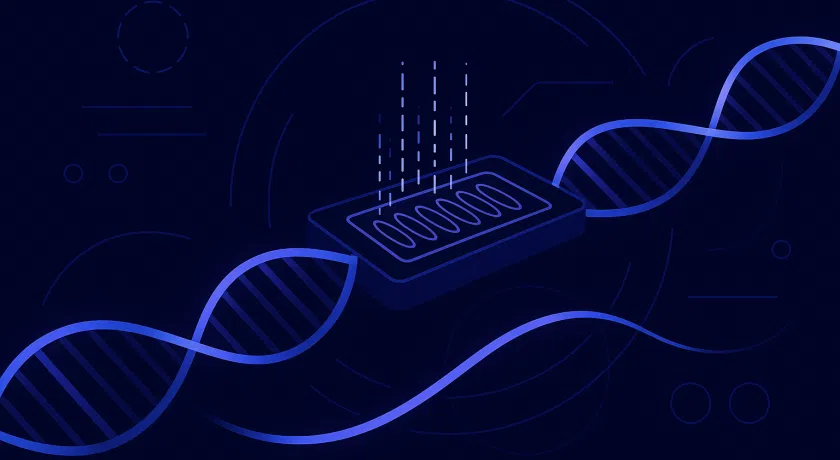
As a scientist, you might have come across single-cell sequencing before. But what is it exactly? In this post, we provide you with a brief explanation.
Single-cell sequencing refers to the sequencing of individual cells to obtain genomic, transcriptomic, or multi-omics information at single-cell level.
The data you generate with this technology has a much higher resolution than conventional bulk sequencing methods and can reveal details that you would otherwise miss.
The smoothie analogy
A simple way to look at this is to use a smoothie as an analogy. If you take a sip from a smoothie, you’ll taste a combination of all the ingredients.
You might be able to guess that the smoothie contains oranges, apples and a bit of strawberry. But you might miss the blueberries and mango that were also used. And it gets even more difficult when you try to determine the ratio’s between the different fruits that were used for the smoothy.
You need a different, more advanced, method than just your taste to exactly determine what the ingredients of your smoothy are. When you compare this to conventional bulk RNA sequencing, the analogy is clear. With bulk RNA sequencing, you generate information on the transcriptome of thousands to millions of cells at once. This means that the expression you measure is the average of all the cells combined.
If you want to study the transcriptome at the level of single cells, you need a more advanced method. You need single-cell sequencing.
Single-cell RNA sequencing provides you with gene expression data at the level of individual, single cells. This allows you to precisely determine the different cell types and subtypes in your sample. Compared to the average gene expression profile obtained with bulk RNA sequencing, single-cell RNA sequencing gives you a high-resolution view of your sample – down to the individual cell.
Get the Ultimate Guide to Single Cell Sequencing
Supercharge your mind with all the crucial single-cell sequencing basics and read through our Ultimate Guide. What types of single-cell sequencing exist? How does data analysis work? And how much does it cost?
How does single-cell sequencing work?
There are different technologies for single-cell sequencing. For this blog post, we focus at single-cell RNA sequencing, as this is by far the most widely used technology.
To perform single-cell RNA sequencing, you need to perform the following 5 steps:
- Generate a single-cell suspension. To isolate the individual cells from each other in the next step, you need to create a single-cell suspension from your sample.
- Isolate single cells. Because we want to barcode the cells individually in the next step, we need to isolate them from each other. Common ways to do this isolation is by FACS sorting or running the cells through a microfluidics system.
- Barcoding and amplification. Once cells are isolated, we can label them with a barcode (a short sequence) to distinguish them during the data analysis. We then amplify the RNA to make sure we have sufficient quantities for the library preparation.
- NGS library preparation and sequencing. We barcode the samples with a sample-specific barcode and pool the amplified RNA into a sequencing library.
- Data analysis. For the analysis of the data, we map the raw sequencing data to the reference transcriptome. After this step, we can analyze the data using specialized data analysis pipelines.
You can read a more detailed version of this process here.
So now you know have an idea of what single-cell sequencing is. But what can you do with it? Read more on that in our blogs about applications and research areas.
Looking for a complete overview of single-cell RNA sequencing? Read our ultimate guide on single-cell RNA sequencing.
Download the ultimate guide


